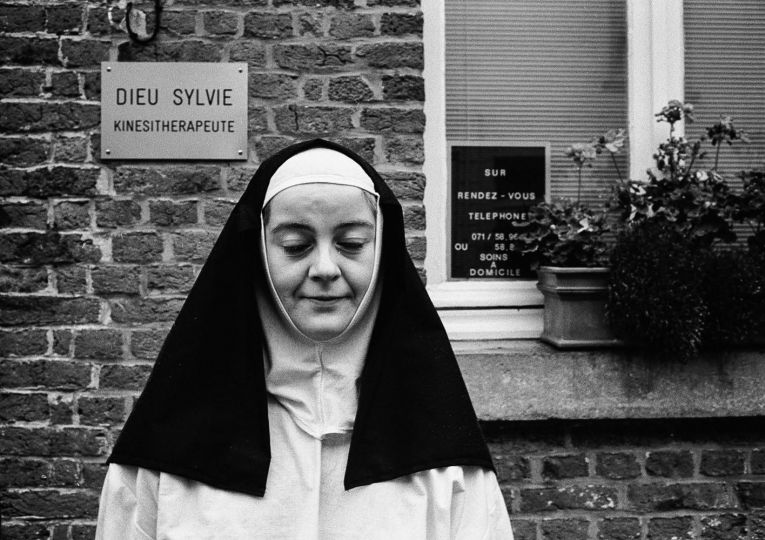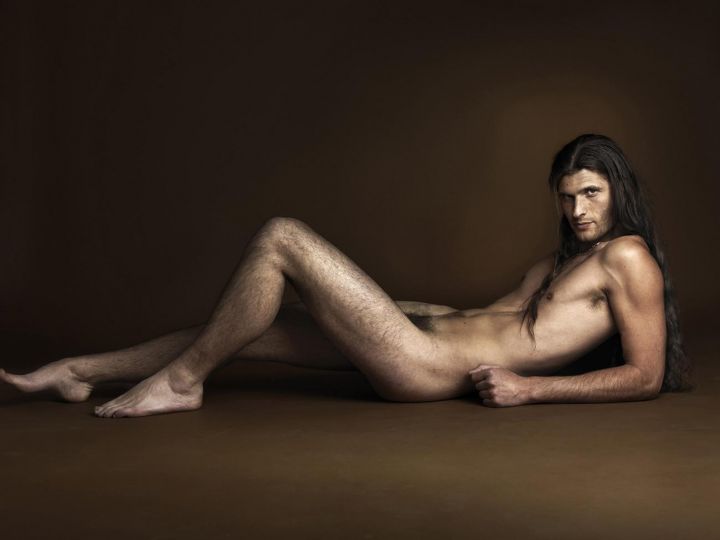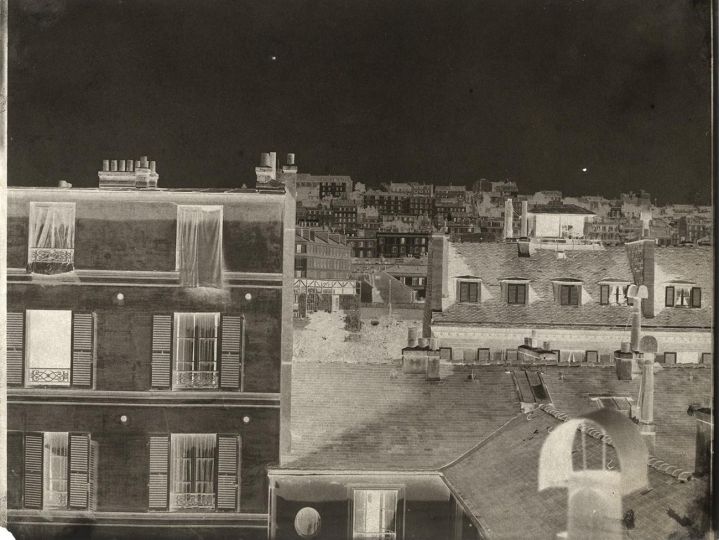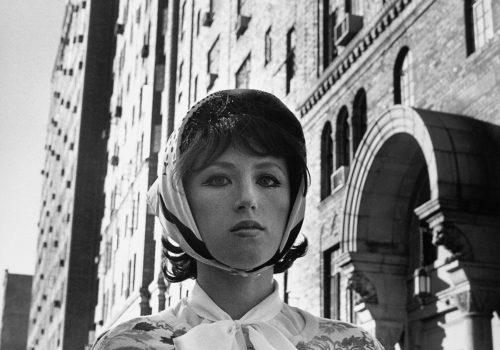Cindy Sherman, masks and genre portraits by Thierry Grizard
“I’m really just using the mirror to summon something I don’t even know until I see it.” – Cindy Sherman.
Cindy Sherman and photography
Cindy Sherman is a well-presented conceptual photographer of gender and identity in a feminist and post-modern “bill” perspective.
These are obviously shortcuts, which, in addition, are based on notions sometimes close to the postulate, especially when it comes to defining what is postmodern.
But above all, is it photography? This is the first thing we want to clarify. Cindy Sherman has never shown photographs, snapshots, street photos, or anything else, except the clichés of her productions, except posts on her Instagram account.
Photographic theater
For her, photography is in a way a recording method in a systematic and serial process. She works in the image of conceptual artists who used photography in a neutral way, as fixation of an analytical and critical approach or a performance. Photography for them was rarely a crucial part of the system. Cindy Sherman performs a kind of theatrical performance, a staging critical, tinged with irony Pop Art, or more positively a black and squeaky humor. The photograph is like the archiving of a state of theatrical representation that gives, alone in her studio, Cindy Sherman. However, in the work of the New York artist photography is neither neutral nor accidental. It is a replication of an existing or supposedly such image because it is significant of a certain type of representation, notably in the Untitled Film Stills series: the phallocratic representation of women in Hollywood cinema in the 1950s. staged photographs are a double of the symbolic image, media and film among others, is obviously not indifferent, it is even the conceptual axis around which all its approach gravitates, which consists of “repeating” to create the difference.
“Reverse engineering” and photography
Cindy Sherman, in line with the Pop Art criticism of vernacular culture, reproduces, through staging, stereotypes, she duplicates them by isolating them, taking them more or less violently from the real referent (a film) or fantasmatic (collective representations). The theater of images and signs implemented physically in the Shermanian theater intrinsically needs photography as a double semiotic. It is the flatness and the temporal isolation of the photograph that allows the critical return of the shifted image (the theater of signs played or symbolized) on itself (the collective image of the Woman, of the desire, of wanting to look younger , etc.). An image for an image.
Medium and material
On the other hand, Cindy Sherman has often stated that she does not want a mode of expression that is elitist, valuable. Photography by its direct approach without intervention of the virtuosity ofthe making, corresponded better to her desire to remain close to the popular culture, and to evacuate the notion of demiurge artist, position quite banal in the years 1970 and 1980. Cindy Sherman’s medium is not strictly photography, she is rather a performer who plays roles, the material of her approach is none other than herself. Photography is, however, the medium in the sense that it is the medium in which Sherman’s theatrical performances make perfect sense. An environment as thin as a projection plane, like a sheet that would slice the time frame to give a surface on which the real turns like a glove by replicating itself.
The revealing masks of Cindy Sherman
The games of appearances and the precariousness of the identity by identification with the models of representation are the subject, the motive of the work of the conceptual photographer, the semiotic landscape from which she embroiders critical, sarcastic and role-specific role plays. purely subjective and uncontrolled shifts. The approach of Cindy Sherman is, despite the qualification of conceptual, intuitive. Certainly, she works in series: the macho stereotypes of Hollywood cinema, the full pages of charming magazines, the fear of aging and youthism, the tragic clowns of everyday life, etc. There is an appearance of systematism, the same model, often unique, fairly similar frames and full length, a constant shooting distance, a high level of detail, and so on. But the arrangements to which she proceeds are not pre-established, by her own admission, she never knows how the theatrical performance in progress will end. This spectacular desiring machine that functions as a kind of conceptual digestion in images is reminiscent of the work of David Altmejd who tries to get us into the “dividu” that is an artist, where intimacy and collective representations intertwine inextricably. The small theaters of Cindy Sherman are reminiscent of this, an ongoing derivative process, guided by a concept to digest, that the camera stops at specific times.
Masks, language games and role plays
The artist’s masks games are not just analytical detachments from the appearances (artifices) of Man in society, or rather, as far as Cindy Sherman is concerned, in the vast majority of cases, the masks which are affix to women and internalize them. Indeed, Cindy Sherman is cracking makeup and varnish, she exceeds the role in overplaying rocking into the grotesque, the pathetic. It deconstructs according to a general axis, but not in a methodical and calculated way. Beyond the criticism of social coercion, emotional flaws multiply: fear, despair, death and organic spill contaminating the conceptual approach.
The Picture Generation
At about the same time as the beginnings of Cindy Sherman, Duane Hanson in his hyperrealistic staging uproots social situations where the same exhaustion, emptiness, despondency is consistently shown. In 1978, with Destroyed Room, Jeff Wall, much more distanced than Cindy Sherman, creates photographic paintings depicting the disenchantment of “modern times”. It does so through a conceptual process that shows the gap between the source of inspiration (very popular classical paintings) and the fictional “document”, totally reconstructed, of a contemporary scene. It should be remembered that in 2009 there was a resounding exhibition at the MET which, under the title The Picture Generation 1974-1984 brought together the artists of the appropriation and deterritorialization of the images inspired in part by the French structuralists, as well as Gilles Deleuze. Deconstructivist feminist artists such as Barbara Kruger, Robert Longo, Richard Prince, Jack Goldstein, etc., could be seen. Cindy Sherman is not isolated in her approach, it is nevertheless distinguished by the subjective and her personal involvement as a unique model of her clichés.
Breaking icons
The masks worn by Sherman are ineffective and broken, anxiety is over. The American artist has often been denied the possibility of empathy, of subjectivity beyond the confines of criticism. Yet the taste for the carnivalesque grotesque, the morbid and the dereliction is patent. Which is, of course, disturbing in the context of a close political and sociological reading of Cindy Sherman’s work. It should also be remembered that in the 1980s other artists such as Andres Serrano with Piss Christ (1987) or Jeff Koons with Made In Heaven (1989) showed a deep interest in the flesh, the organic and the morbid. There is in the cruel doll games of the American a share of uncontrolled that exceeds the subject and shows a stubborn recurrence. The faults exhibited by the photographer reside just as well in the fracking of the representation model as in the free and subjective contamination. What is fascinating in the use of masks by the actor is that despite the gap we continue to identify the referent. Everyone knows that this actor is not such or such a real or fictional character, yet it will be said of him that he is Hamlet or Bonaparte. Cindy Sherman plays this gap fully, but not to convince us of the correctness of the interpretation. On the contrary, the masks (disguises) with which she is decked up are there to betray the role play of media icons and individuals who turn into pitiful epigones.
The unveiling of the masks
Cindy Sherman’s masks do not hide, they reveal. These are masks seen from the other side, through the eyes of the artist. Moreover, the look of Cindy Sherman often denotes the prank or copy of a hypothetical cinematographic image, it examines, seems not to be part of the show that is given. The photographer’s gaze is frequently riveted to the outside of the stage, where the psyché (the mirror she sets on the periphery to judge what is seen by the other Cindy Sherman, the one who sees through the ‘objective). Identity masks (belonging, recognition) fail for the New York artist. They let flow the chaos, the drive, plural, unruly and conflicted that barely conceals behind the social masks. Nobody is fooled in reality, but everyone obeys the rules of appearances suitable to avoid, it is believed, chaos, hers and that of all. So that through these portraits of social masks in the form of apocryphal self-portraits we end up with series that are like so many vanities followed by the mortiferous and meditative procession that accompanies this kind of artistic reflections.
Irony, humor and orgiastic carnival, the deconstructivist series
The images of the artist could therefore be considered as vanities, but Cindy Sherman often adds a carnival dimension. The masks fall, the limits collapse, the drives are released oscillating between excess and morbidity. The analytical rendering of the artist oscillates constantly according to the series.
In early works such as Untitled Film Stills (1977-1890) Cindy Sherman practiced the irony Pop Art, that is, the critical distance that exhibits the artifice and emptiness of the great vernacular myths. But the distance is never completely respected, the images are always borrowed from a certain pathos that it would be very difficult to reduce to the mimicry of the mask of this or that stereotype.
In A Sex Pictures (1992), the idea is very distant because there are no more self portrait portraits of society but unlikely imprints of dolls, prostheses and anatomical mannequins. This work is reminiscent of a delusional hybridization between Hans Bellmer and the desiring machines of Gilles Deleuze, or even the erotic self-portraits of Pierre Molinier. The carnivalesque, the grotesque, the black and sardonic humor dominates, as well as in the Fairy Tales series inspired by the popular horror films. Here again the fascination with death and its finery leads criticism towards countries that are quite foreign to it and irreducible.
In the Fashion series (1983-1984 and 1993-1994), which originated from fashion houses, the register is satirical and without nuance, we drop the irony to indulge in a biting humor. Cindy Sherman through the “grammar” of “people” photographs ( acerb flash, frozen smiles of predators, extravagant and ostentatious outfits, etc.) underlines the emptiness of this sadomasochistic game. Yet most of the women she plays, it seems with delight, seem haunted and threatened by the anguish of “no longer being,” disappearing from the game.
The series Clowns (2003-2004) is the photographer confessed one that gave her a lot of trouble, because a clown advance masked, the actor is invisible. She could not find the right angle of approach until the day she saw the cliche of a clown with dripping grease, degraded by perspiration. Since the mask had cracked Cindy Sherman was able to set an approach that in this case could not be other than that of the tragi-comedy consisting of decking out thingummybob of the grinning smile of clowns. It is probably one of her least successful series, the gap existing from the beginning, and the critical approach is also less prominent, more immediate and obvious. Which shows that the satirical dimension is essential in her work.
In Society Portraits (2008) Cindy Sherman resumes her satirical tone and portrays the grip of “youthism” on women. In these portraits the artist appears old, marked in a rather outrageous way, which introduces the temptation to see in these social portraits self-portraits in hollow. As if the continuity in time of the same model could have the value of intimate psychological portraits, in short biographical. While this approach seems artificial, overplaying aging nonetheless contributes to Cindy Sherman’s tendency to go beyond political and social criticism, to allow empathy with women victims of the system and themselves to emerge. It is also why in the course of time it has gradually moved away from the irony that poses and judges to adopt a sarcastic humor though never devoid of empathy.
In her latest series, she takes the shift of Untitled Film Stills but in large format and color to stage aging starlets. This series is much less caustic than the previous ones, the irony Pop Art gave way to a compassionate humor. The pathos seems to have taken precedence over the concept. This part of Cindy Sherman’s work is irreducible, constant and probably gives the whole body its singularity.
Thierry Grizard
Thierry Grizard, a graduate in philosophy at the Sorbonne University, former Professor, attracted by artistic creation, he then embraced various art subjects as a designer, architect and film professional. With a remarkable experience of more than twenty years as a film producer and special effects specialist, he has pursued his passion for the visual arts since very young not only as a photographer and creator of images, but also as a writer of texts focusing particularly on contemporary art, some of which are to be found on the website artefields.net, that the author enriches with other issues related to his collaboration with art historians.
Source : artefields.net
First published on artefields.net : http://clicky.me/lk-odp-cindy-sherman
















